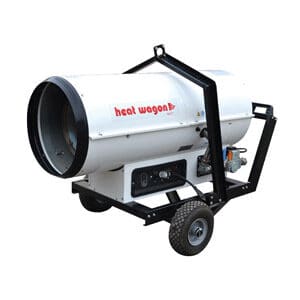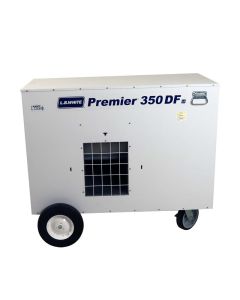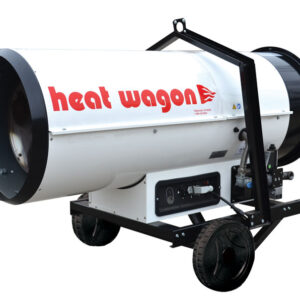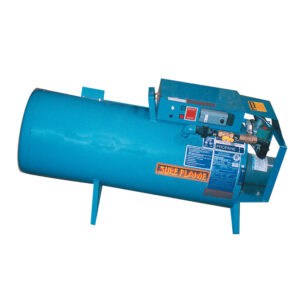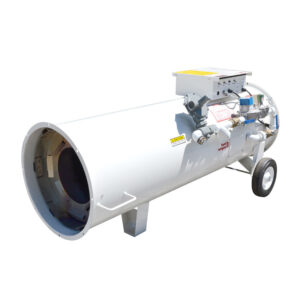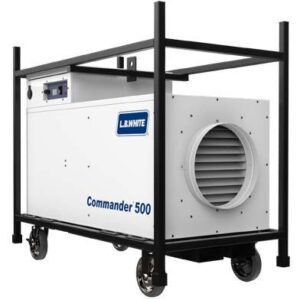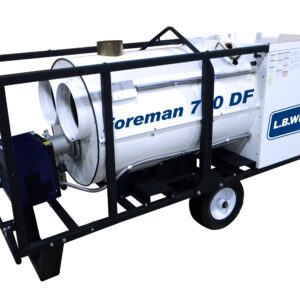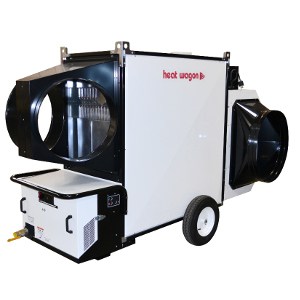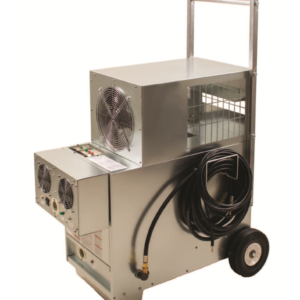Direct-Fired Heaters
Showing all 5 results
Portable direct-fired heaters are systems used for providing temporary heating in various applications. These heaters are commonly used in construction sites, outdoor events, warehouses, bed bug treatments, workshops, and other spaces where a temporary heat source is needed. Here are some key features and information about portable direct-fired heaters:
Heater Types
Portable direct-fired heaters use a direct-fired combustion process. This means that the fuel (usually propane or natural gas) is burned directly in the heater, and the hot combustion gases are released into the space to provide heat. There are diesel direct-fired systems, but we consider them to have higher potential for dirty combustion, as they require more maintenance(i.e. fuel filters, fuel nozzles, fuel pumps), and the combustion bi-products produce a stronger “fume” smell when the heater is not operating at normal spec.
Fuel Types
The most common fuels used in portable direct-fired heaters propane, natural gas and kerosene/diesel. Propane heaters are often more portable as propane cylinders can be strategically placed close to the system, whereas natural gas is generally confined to gas lines in buildings, Natural gas supply in buildings sometimes may not have sufficient volume to supply a heater to function properly. Most portable diesel direct-fired systems have an onboard fuel tank.
Heat Output
These heaters are known for their high heat output, making them suitable for quickly warming up large spaces. The heat is generated directly from the combustion process, whereas indirect-fired heaters separate the combustion chamber from the air, evacuating the products of combustion out of a flue stack, much like a home furnace. As a result, the direct-fired heater is considered more efficient, since venting flue gas normally results in losing 15-20% of the heat produced by the heater.
Portability
As the name suggests, these heaters are designed to be portable. They often come with handles or wheels for easy transportation. This portability is beneficial for moving the heater to different locations within a job site. Direct-fired heaters tend to be lighter, as the burner chamber contains less metal/steel than indirect-fired heaters.
Ventilation Requirements
Since direct-fired heaters release combustion byproducts into the space, proper ventilation is essential. It’s important to use these heaters in well-ventilated areas, or connecting the air inlet of the machine via duct to outside air ensure a safe aire space. Placing a direct-fired system in an unventilated space will consume oxygen used for combustion, in turn lowering oxygen saturation, while raising carbon monoxide, carbon dioxide, and nitrogen oxide; making it a potentially dangerous or lethal environment.
Temperature Control
Some models come with temperature control features, allowing users to adjust the heat output via thermostatic control, or modulating gas valves. The Heat Wagon 1800B is a good example of a machine that has both thermostatic control and gas modulation. The machine has an adjustable valve that allows the machine to produce as low as 450,000 BTUs or as high as 750,000 BTUs. This adds flexibility to their use in different settings.
Safety
Users should follow safety guidelines provided by the manufacturer. This includes proper ventilation as mentioned in the ventilation requirements, fuel handling, and maintenance procedures. Some models may have safety features such as tip-over switches, carbon monoxide detectors (Sleeptight 800 Product) or oxygen depletion sensors. When used properly, direct-fired systems are an excellent choice to produce large volumes of heat, with a generally lower product cost than indirect systems.
It’s important to note that while portable direct-fired heaters are a highly effective for temporary heating, users should be aware of safety precautions and guidelines to ensure their proper and safe use in various settings.

